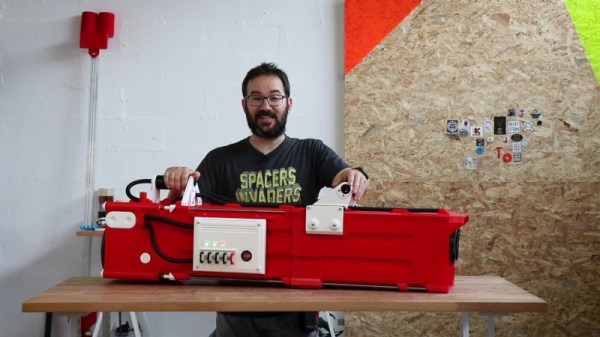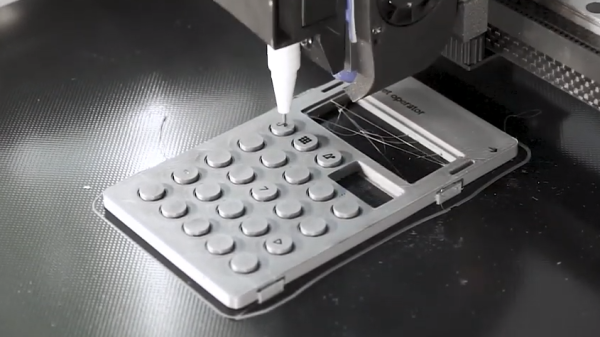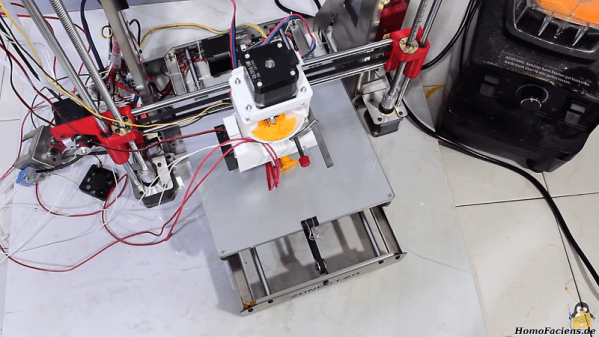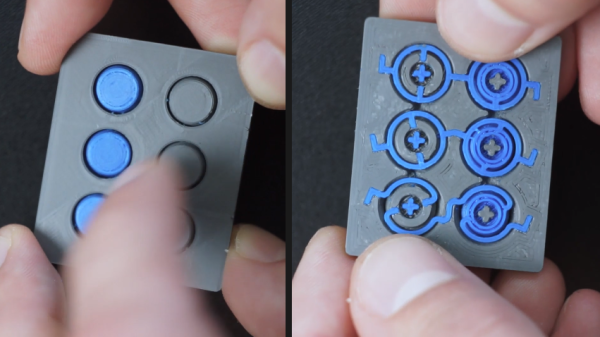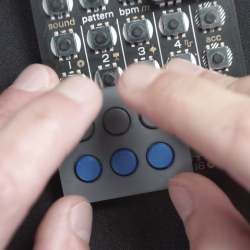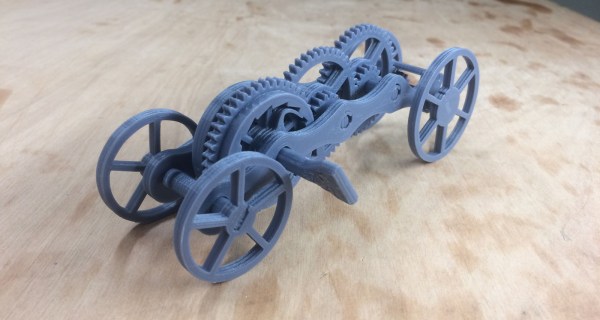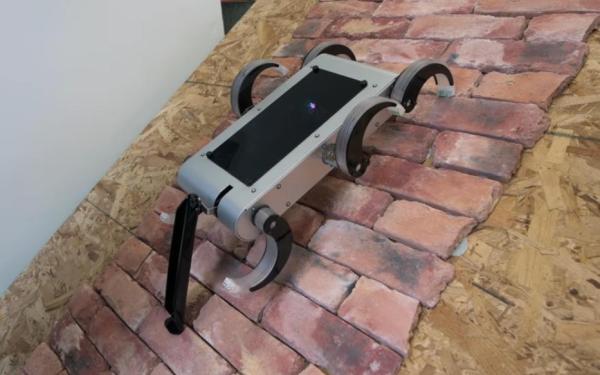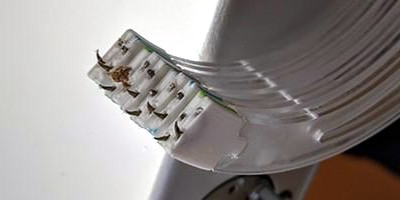Gatling guns were an early attempt at creating a rapid-firing weapon, and were popular amongst armies in the 19th century. Today, the basic design remains in use as a heavy weapon for putting many rounds downrange very quickly. [Ivan Miranda] decided that the Nerf world was missing a piece of the action, and got started on his own design (Youtube link, embedded below).
As per most [Ivan] builds, this one is a glorious pile of 3D printed parts turned into something functional and fun. It’s an ingenious design that’s more a Gatling in spirit than reality as it lacks the multiple barrels of the original, and it uses smart ducting to allow a single electric fan to both fire the foam Nerf balls as well as suck them in to reload the next shot. In testing, it achieved a muzzle velocity of 60 mph, firing at a rate of approximately 10 rounds/second. The presentation is great too, with plenty of cable wrap, meaty switches, and glowing lights to add to the aesthetic. There are even a couple of bright LED lamps on the front to help dazzle your targets into submission.
Once again, [Ivan]’s work is a great example of what is achievable with a 3D printer and smart design. His water jet drive ain’t bad, either. Video after the break.

